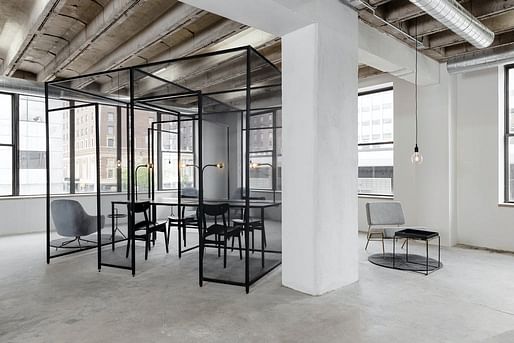

At the end of September, we released the results of our survey of the architectural community’s plans to return to the office after the COVID-19 pandemic. At the time, only 29% of respondents said that their firms required all staff to return to in-studio working, with 15% still required to work remotely. An additional 39% of respondents were being offered a choice of working remotely, returning to the office, or operating on a hybrid model between the office and their home.
Of the respondents who had been offered the choice between working from the office, the home, or a hybrid model, over half had chosen the hybrid model. As the pandemic wanes, there is evidence that this embrace of either a fully or partially remote approach to work will remain over the long term. Over on our jobs board, for example, there are currently 34 active job openings for remote candidates, ranging from 3D designers to project architects to HR specialists.

This trend is reflected in the broader U.S. economy. One survey earlier this year found that 99% of human resource leaders expect hybrid working to become a staple of the future workplace. This consensus has prompted experts to consider how businesses, including architecture firms, can better organize their workplace environments and infrastructures to maximize the benefits of hybrid working.
For Alanah Mitchell of Drake University, this includes reflecting on the benefits and pitfalls of hybrid working compared to traditional full-time office work. Mitchell, who is an Associate Professor and Chair of Information Management and Business Analytics at Drake, concurs with the consensus over the past two years that remote workers are more productive, happier, and are more financially secure due to the absence of commuting costs. However, Mitchell also sees in-office work as an important factor in building transparency and trust between directors and employees.
“Developing an organizational culture happens naturally,” said Mitchell in a recent article published on The Conversation. “Casual office conversations — a worker walking down the hall for a quick and unscheduled chat with a colleague, for instance — can lead to knowledge-sharing and collaborative problem-solving. That’s difficult to replicate in a virtual environment, which often relies on advance scheduling for online meetings.”

For Mitchell, a hybrid work model runs the risk of merging the obstacles of both remote and office-based employment. In particular, Mitchell stresses the importance of digital security, a factor particularly important for architects depending on secure connections to office servers, or who are employed on confidential projects. “Home networks, an easier target for cyberthreats, are typically more vulnerable than office networks,” Mitchell notes. “Hybrid organizations must invest upfront to work through these complicated and often expensive issues.”
In addition, Mitchell warns that a switch to hybrid work must also lead to a reconfiguration of how directors measure employee performance. Whereas office-based work allowed directors to observe and interact with employee behavior, a hybrid model must see directors focus more on clear, agreed performance metrics.

For firms and companies wishing to establish a hybrid working arrangement, Mitchell recommends specific actions to maintain productivity, avoid workplace divisions, and enhance wellbeing. “Meeting for the sake of a meeting leads to fatigue and burnout,” notes Mitchell. “Not everyone needs to be at every meeting, yet finesse from management is required to make sure no one feels left out.” As part of this, Mitchell recommends allocating meeting-free days to allow employees an uninterrupted block of work for complex projects.
In addition, Mitchell recommends strengthening employee feedback avenues to compensate for the reduced face-to-face interactions resulting from hybrid working. These can include one-on-one conversations, focus groups, surveys, and the recognition and rewarding of good performance through financial incentives. Finally, to avoid a social fragmenting of the workplace between people working in the office and at home, Mitchell stresses the value of transparency in communication.
“Policies must be in place to define what tasks can happen in the office and remotely,” Mitchell advises. “All employees must receive the same information at the same time, and in a timely manner. After all, whether in the office or online, workers don’t want to feel they’re the last to know.”
No Comments
Block this user
Are you sure you want to block this user and hide all related comments throughout the site?
Archinect
This is your first comment on Archinect. Your comment will be visible once approved.